Model House Item Number: 2.5E1353 from the The Burke: University of Washington
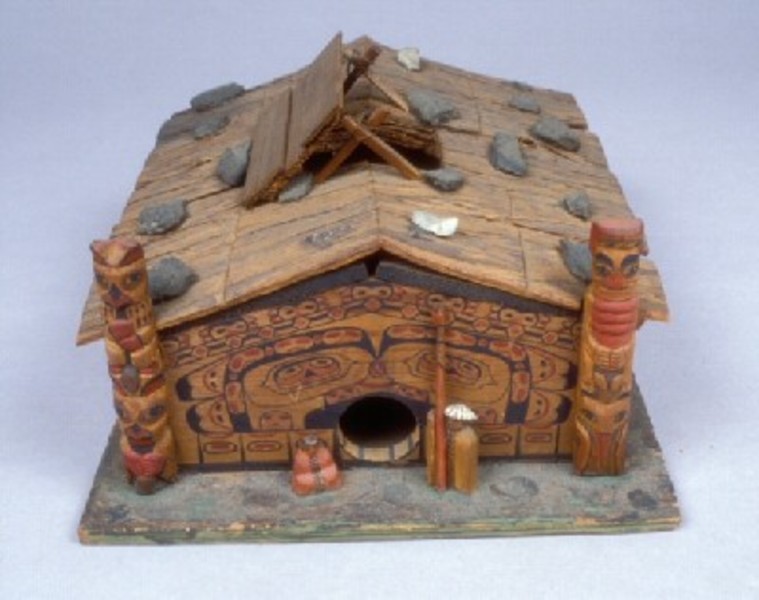

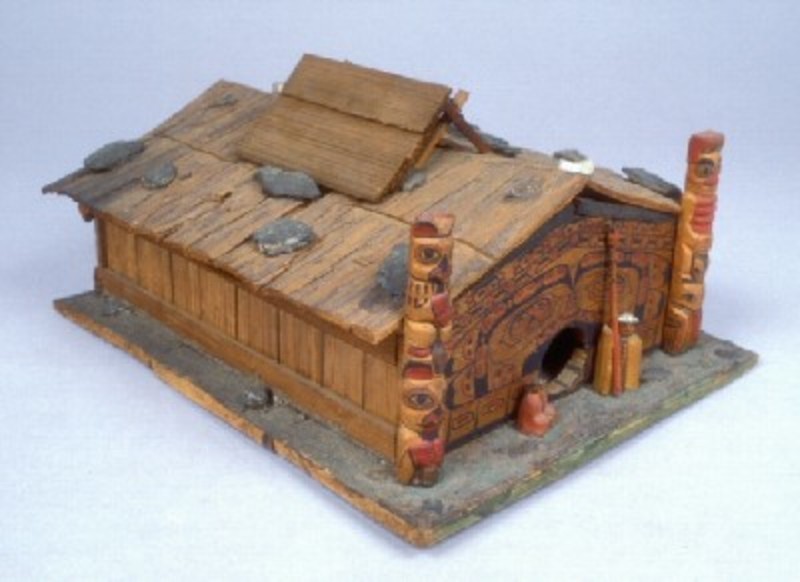
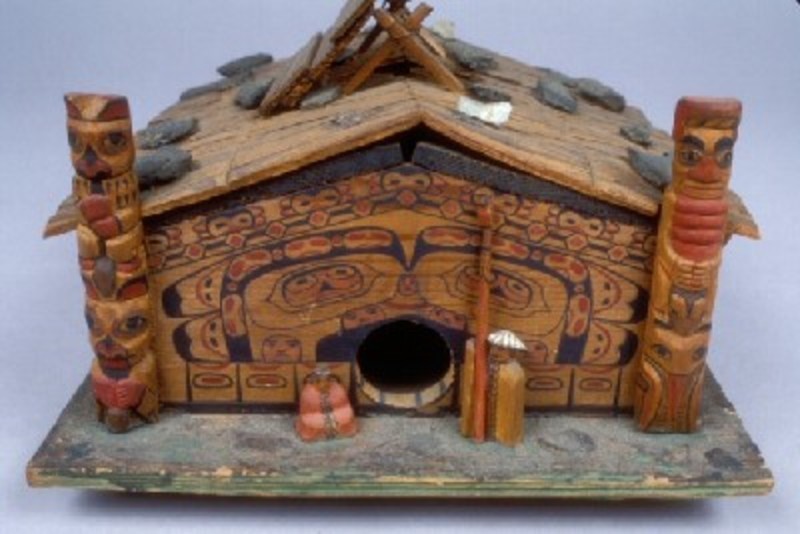

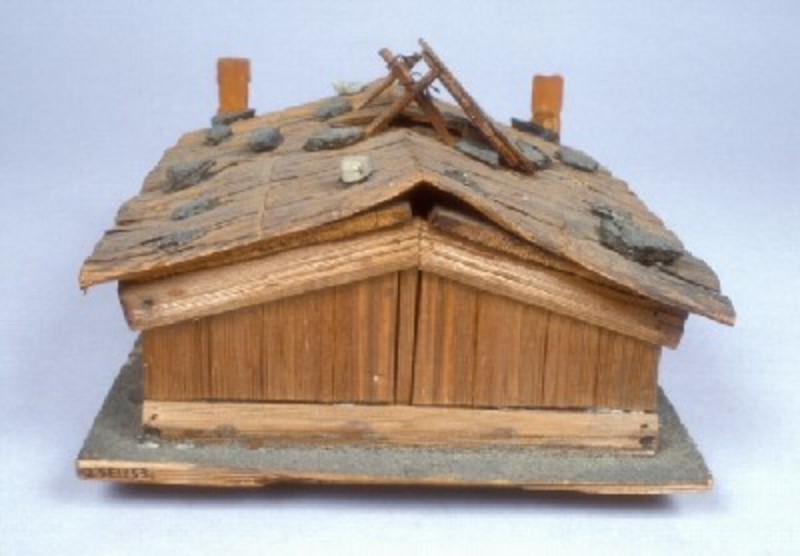
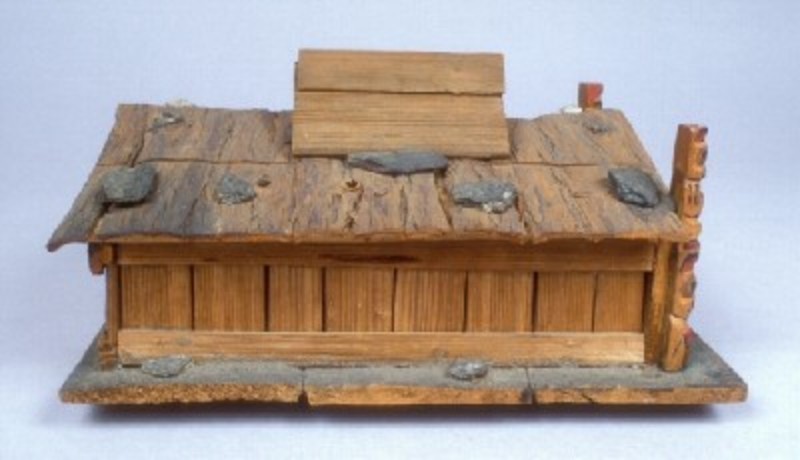
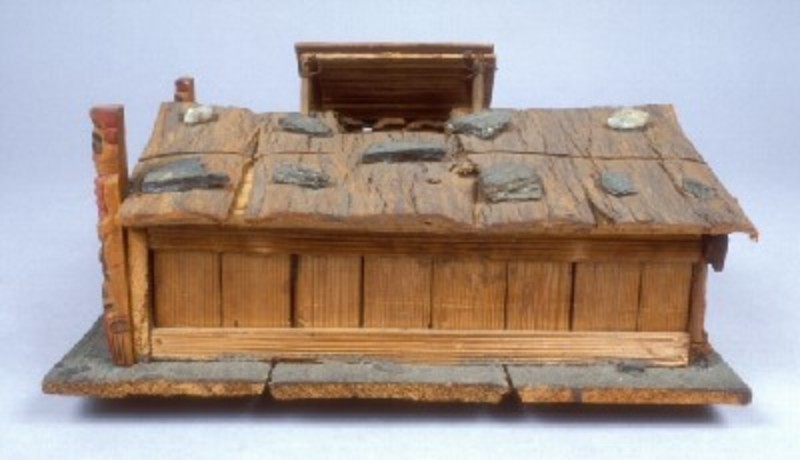
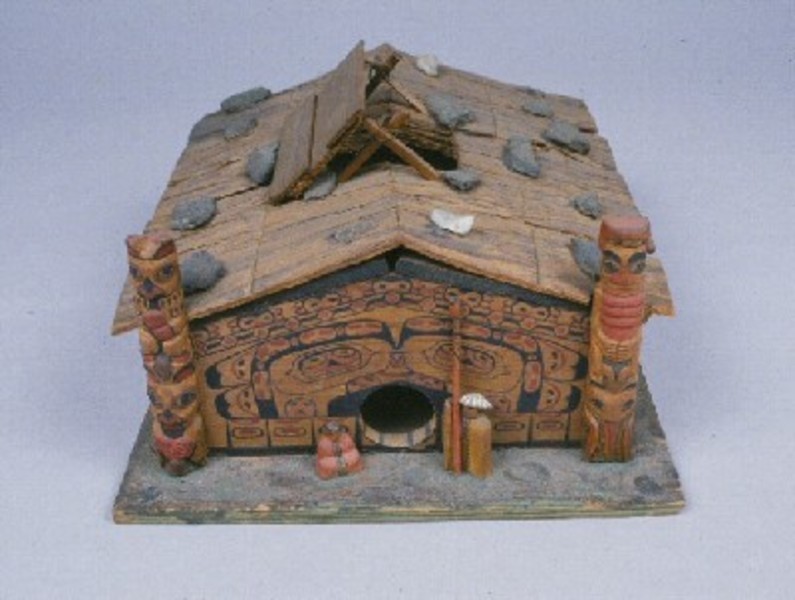
Automatically Generated From Material
The paint is red and black.
Exhibit Label
Viola Garfield recorded this explanation of the house model: "The model was made by Fred Alexcee, Port Simpson, British Columbia, in 1934 for Viola E. Garfield. It represents a house with a potlatch in progress. At the back of the house is a dancer dressed in Chilkat blanket and ermine headdress accompanied by a drummer using a large box drum suspended from a beam. A chorus of women is seated on the left and a director with dance baton stands back of the dancer. In front of the house is a greeter with dance baton to direct guests to their seats. The seated figure has no special significance. (These two figures had limpet shells on their heads to represent spruce root hats.) The housefront painting represents a grizzly bear, crest of the maker of the model and his lineage. The small faces bordering the bear's face represent skulls of ancestors. Hexagonals connected by black bars above represent bones of the knees and lower limbs. These are the skeletons of ancestors who killed many mountain goats and left them to rot. In revenge, and to teach them a lesson in respect of animals, the mountain goats caused a mountain slide that destroyed many people. The facade pole on the right of the doorway represents a shaman with cedar bark head band and blanket holding a symbol of his supernatural power. The bird figure at the base is a crane. I do not recall the significance of the figures on the other pole, but they probably represent a dancer at the top and a grizzly bear at the base." Viola E. Garfield, Oct. 9, 1957
The design on the front of the house seems to be based on the design of the interior "Rain Screen" of the Gaanaxteidi Tlingit Whale House from Klukwan, Alaska. The small pole to the right seems to be based on the "Woodworm House Post," one of four interior house posts from that same house. It may be that Alexcee was looking at a photo of that house interior when he made his model, but interpreted it to match his own family history. Robin K. Wright, Feb. 8, 2006.
Item History
- Made by Frederick Alexcee
- Received from W. Dean Edmundson
What
Who
- Culture
- Tsimshian: Lax-kw'alaams
- Creator
- Frederick Alexcee
- Received from
- W. Dean Edmundson
Where
- Holding Institution
- The Burke: University of Washington
Other
- Motif
- Grizzly Bear | Crane | Model Totem Pole | Human Figure | Formline
- Collection
- Burke Museum Ethnology Collection